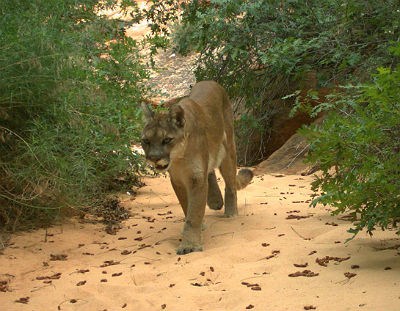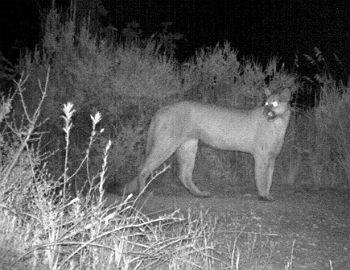
NPS photo From the deep canyons to the high plateaus of Zion roams a large, stealthy predator: the mountain lion, or cougar. Mountain lions can be six to nine feet long from nose to tip of tail, weighing 80-180 pounds. The total population of this giant carnivorous cat is not known, but the park may be home to as few as half a dozen.
The mountain lion is a solitary animal—the male does not share its territory with other male mountain lions. Males mark their territory with urine to warn away intruders. A male mountain lion's range can cover up to 300 square miles, and often overlaps with the range of one or two females, who have ranges approximately one third this size. Mountain lions once lived throughout most of the United States, but their habitat has shrunk significantly, due to predator control programs and the decline of game-rich wilderness.

NPS photo Mountain lions are very rarely seen within the park, and typically avoid the crowded main canyon. However, sightings have been reported in the Kolob Canyons section of Zion, and motion-activated cameras in Zion's backcountry document the presence of these elusive animals. No attacks on humans have occurred within Zion, and they have a plentiful food source in the large herds of mule deer and bighorn found within the park. If you do see a mountain lion while in Zion National Park, please tell a park ranger about this rare occurrence.
For more information on living and recreating in mountain lion habitat, check out the Utah Division of Wildlife Resources webpage: Staying Safe in Cougar Country
|
Last updated: December 11, 2015
